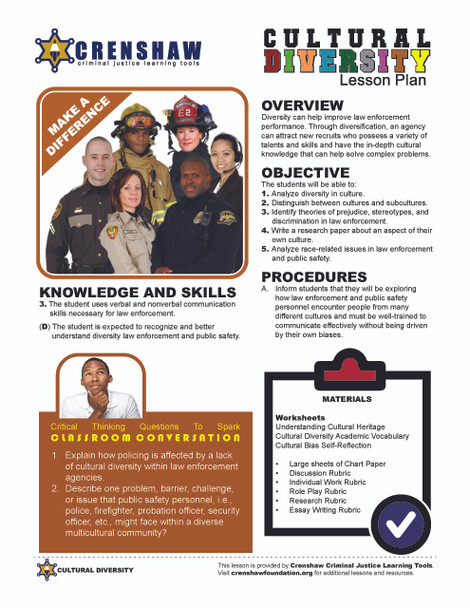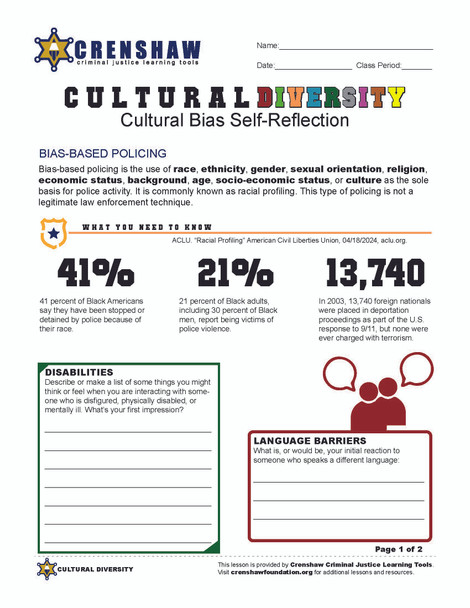Description
Cultural diversity in policing is essential as it fosters trust and mutual respect between law enforcement and the communities they serve, leading to more effective collaboration and communication. By reflecting the diverse backgrounds of the population, police forces can better understand and address the unique needs and concerns of all community members, enhancing public safety and cooperation. Furthermore, a culturally diverse police force can help reduce biases and promote fairness, ensuring that justice is administered equitably across different social and cultural groups.
OBJECTIVE
The students will be able to:
- Analyze diversity in culture.
- Distinguish between cultures and subcultures.
- Identify theories of prejudice, stereotypes, and discrimination in law enforcement.
- Write a research paper about an aspect of their own culture.
- Analyze race-related issues in law enforcement and public safety.
MATERIALS INCLUDED
- Understanding Cultural Heritage Worksheet
- Cultural Diversity Academic Vocabulary Worksheet
- Cultural Bias Self-Reflection Worksheet
- Large sheets of Chart Paper
- Discussion Rubric
- Individual Work Rubric
- Role Play Rubric
- Research Rubric
- Essay Writing Rubric
INTERNET ACCESS IS RECOMMENDED.
TIME FRAME
Approximately three or four 45 min. class periods.
Answer Keys and Rubrics are included.
Visit our Amped Up Learning store at Crenshaw Criminal Justice Learning Tools for more CTE Criminal Justice and Public Safety teaching resources.


















